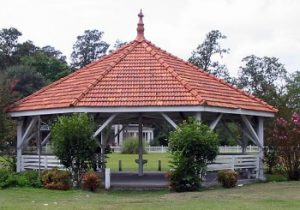Long County History
On August 14, 1920, the state legislature proposed a constitutional amendment to create Long County from Liberty County, one of the original eight Georgia counties established in 1777 from the colonial parishes. On November 2, 1920, Georgia voters ratified the proposed amendment and Long County became Georgia’s 159th and final county.
Originally, the western portion of St. John’s Parish, the land along the Altamaha River was an important frontier boundary protecting the Georgia colony from the Spanish and Native Americans to the south and West. The county seat of Ludowici began in the 1840’s as a stop known as “Four and a Half” on the Atlantic and Gulf Railroad. Around 1850, landowner Allen Johnston built his home near the railroad. A station was built across the tracks and a small village developed known as Johnston Station. In 1903, William Ludowici built the “Dixie” plant of his Ludowici Celadon Company which made clay roofing tiles. Mr. Ludowici donated money to build a new schoolhouse in 1905 and in his honor renamed the town Ludowici.
Long County has an abundance of recreational assets. The Altamaha River provides recreational opportunities such as fishing, boating and water sports. The lands surrounding the river are rich with game for hunting, bird watching and beautiful plants and trees are numerous. These lands are owned by the State of Georgia and maintained by the DNR. Long County also highlights many
historical sites throughout the county to include the Ludowici Well Pavilion (1907) listed on the National Register of Historic Places site, Jones Creek Baptist Church (1856) and Walthourville Presbyterian Church (1884) both historic sites. The Long County Courthouse, although having undergone renovations through the years was built in 1926, and is approaching it’s 100th birthday in 2026.
